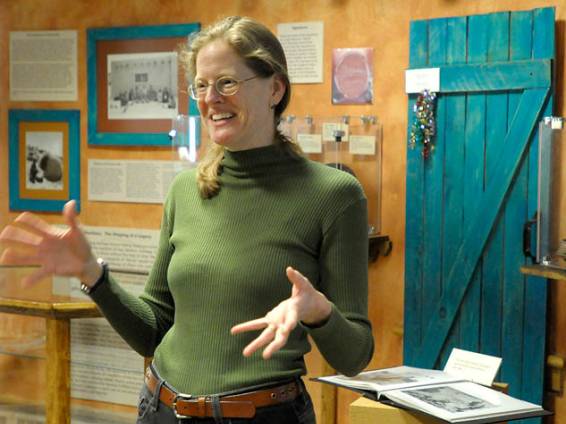About Dr. Bonnie Pitblado

Dr. Bonnie Pitblado
As an associate professor of anthropology in USU’s Department of Sociology, Social Work and Anthropology, Pitblado also serves as director of USU’s Anthropology Program and Museum of Anthropology. She earned a bachelor’s and Phi Betta Kappa Honors at Carleton College and a doctorate in anthropology from the University of Arizona. She is the 2009 College of Humanities, Arts and Social Sciences “Undergraduate Mentor of the Year.” In July 2009, she helped launch the College of HASS’ first spin-off business, USU Archaeological Services, Inc. and now serves on its board of directors.
USU’s Sunrise Sessions is a breakfast lecture series held quarterly and designed to highlight timely and cutting-edge research conducted at Utah State University. The lecture is sponsored by Regence BlueCross BlueShield of Utah and is free and open to the public.
The REAL 10,000 B.C.: Utah’s and Idaho’s First Inhabitants
Movie hero Indiana Jones may the world’s most famous archaeologist. His adventure-filled occupation takes him to exotic locales as he hunts for treasure, all the while defeating the movie’s villain and finding love. And while the everyday archaeologist does hunt for treasure from the world’s past, Utah State University archaeologist and anthropology professor Bonnie Pitblado wants to share the truth behind Indy’s hat, whip, gun … and treasure.
Pitblado’s research focuses on the Ice Age human occupations of northern Utah and southeastern Idaho, two locales that many would find neither exotic nor adventurous. However, Pitblado would disagree.
“This area is the mother of all ecotones, and it is right in our backyard,” Pitblado said. “In northern Utah and southeastern Idaho we have the meeting of the Columbia Plateau, the Great Basin, the Wyoming Basin and the Central Rockies. These four fundamentally different environments together offer enormously productive and varied resources. The earliest residents of the Americas figured this out very quickly, and we have found evidence of their presence in the region dating back 12,000 years or more.”
Pitblado’s research focuses on the Paleoindian era, the time period when humans began settling in the New World and lived alongside now extinct mammoths and giant bison, starting in the Ice Age and ending around 8,000 years ago. For historical reasons, this period has been little studied in the region. However, a 2008 research program helped Pitblado identify nearly five dozen 8,000-12,000-year-old sites in southeastern Idaho alone, showing that Paleoindians used the area very early and very intensively.
During her Sunrise presentation Pitblado will discuss the many archaeological sites she has documented, how her research was launched with the help of local farmers and ranchers and what she has learned about the indigenous people who colonized the region. She will also talk about the many job opportunities the archaeological discipline offers USU graduate and undergraduate students who learn beside her in the field and laboratory

